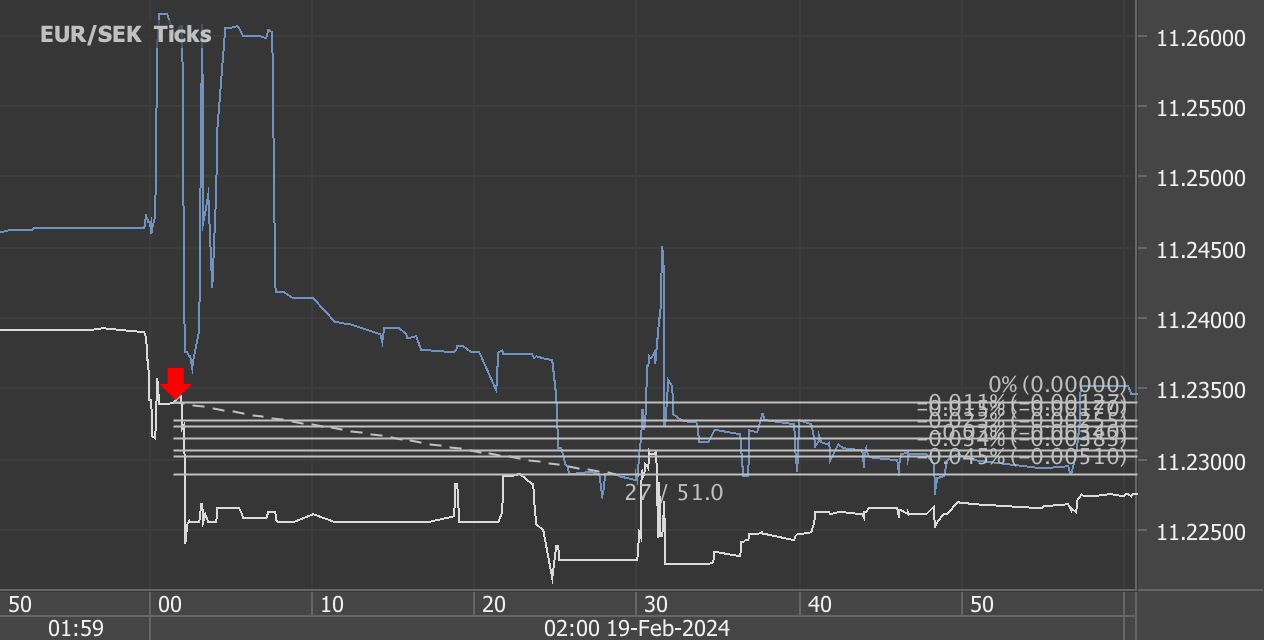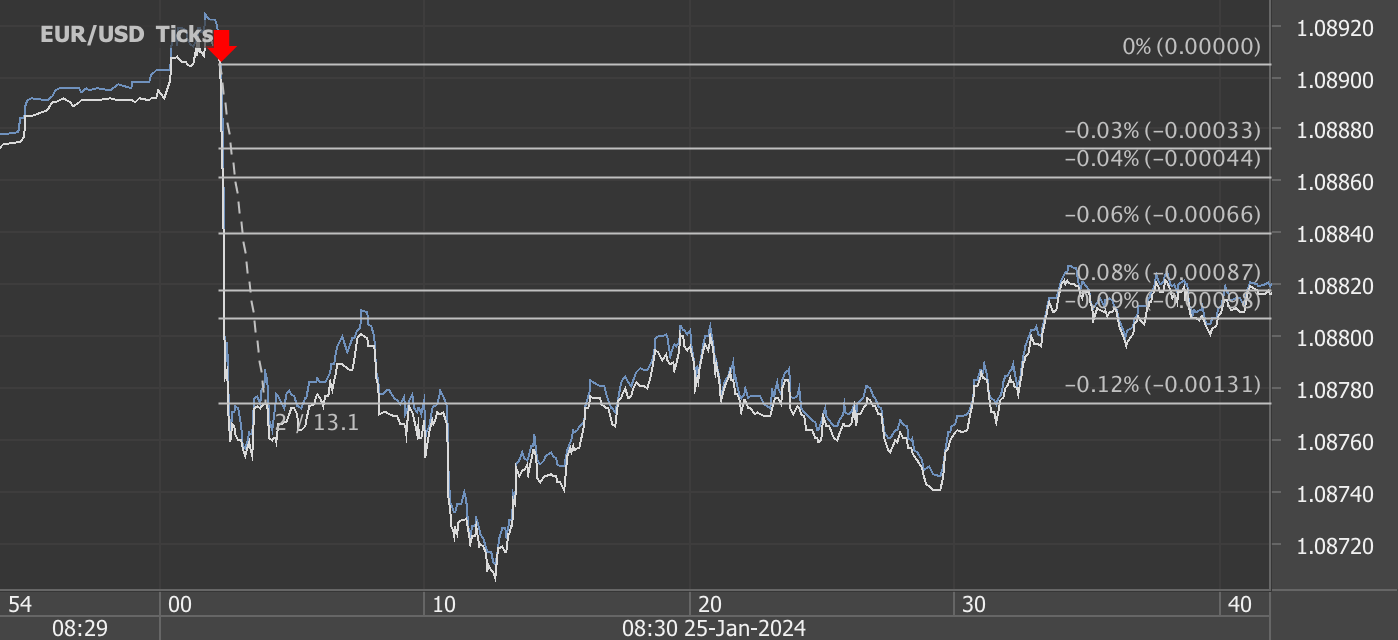According to our analysis there was a potential of 260 pips / ticks profit out of the following 6 events in February 2024. The potential performance in 2023 was 13,607 pips / ticks.
February 2024
US Jobless Claims (17 pips / 1 February 2024)
US Employment Situation (Non-farm payrolls / NFP) (95 pips / 2 February 2024)
US Jobless Claims (24 pips / 8 February 2024)
US Philadelphia Federal Reserve Bank Manufacturing Business Outlook Survey and US Retail Sales (35 pips / 15 February 2024)
Sweden Consumer Price Index (CPI) (51 pips / 19 February 2024)
DOE Natural Gas Storage Report (38 ticks / 29 February 2024)
Total trading time would have been around 9 minutes! (preparation time not included)
Navigating Through Economic Indicators: A February 2024 Overview
In the dynamic world of financial markets, economic indicators serve as vital signposts that guide investors, traders, and policymakers alike. February 2024 was a month teeming with crucial data releases, each impacting market volatility and investor sentiment in various sectors. Let's delve into some of the key economic reports released during the month and their implications on the markets.
U.S. Jobless Claims - A Tale of Two Thursdays
The U.S. jobless claims figures for February paint an interesting picture of the labor market's resilience amid economic uncertainties. On the 1st of February, the jobless claims moved the market by 17 pips, a relatively mild reaction indicating a market in wait-and-see mode. However, the subsequent report on the 8th of February saw a slightly higher market movement of 24 pips, hinting at growing investor attentiveness to labor market health. These fluctuations underscore the labor market's crucial role in influencing monetary policy decisions and market sentiment.
The Employment Situation Report: Non-Farm Payrolls (NFP)
February 2nd brought the highly anticipated Non-Farm Payrolls (NFP) report, which resulted in a significant 95 pips movement. This report is a critical barometer for the health of the U.S. economy, affecting decisions from Wall Street to the Federal Reserve. A move of this magnitude indicates a market keenly sensitive to labor market conditions, reflecting broader economic trends and potential shifts in policy.
Philadelphia Fed Manufacturing Business Outlook Survey
On the 15th, the Philadelphia Federal Reserve Bank's Manufacturing Business Outlook Survey moved the market by 35 pips. This indicator provides insights into the manufacturing sector's health in one of the nation's key regions. A movement of this size suggests that investors are closely monitoring the sector for signs of economic strength or weakness, given manufacturing's role as a bellwether for overall economic activity.
Sweden's CPI: A Nordic Perspective
Turning our gaze to Europe, Sweden's Consumer Price Index (CPI) on the 19th of February influenced the market by 51 pips. This movement highlights the global nature of market reactions to inflation data. Inflation rates are a crucial determinant of central bank policies, and Sweden's CPI data sheds light on the inflationary pressures within the Nordic economy, influencing not just local but also global investment strategies.
DOE Natural Gas Storage Report: Energy in Focus
Lastly, the Department of Energy's Natural Gas Storage Report on the 29th of February led to a 38 ticks movement, underscoring the energy sector's volatility and its impact on broader markets. Natural gas storage levels can significantly affect energy prices, influencing inflation and economic conditions across various sectors.
Conclusion
February 2024 was a month rich in economic data, each report shedding light on different facets of the global economy. From the labor market's status in the U.S. to inflationary pressures in Sweden and energy dynamics, these indicators provide a mosaic of insights. For investors and policymakers, understanding these data points is crucial for navigating the complex interplay of global economic forces. As we move forward, the interrelation of these indicators will continue to shape strategic decisions in the ever-evolving landscape of global finance.
Disclaimer: This blog post is for informational purposes only and should not be construed as financial advice. Always conduct thorough research and consider seeking advice from a financial professional before making any investment decisions.
Start futures/forex/oil/grains news trading with Haawks G4A low latency machine-readable data today, we offer one of the fastest machine-readable data feeds for US economic and commodity data and economic data from Norway, Sweden, Turkey and ECB interest rates and statement.
Please let us know your feedback and check out our G4A low latency data feed.
All data is machine readable and available via API access in Aurora, CH1, NY4 and LD4. Free trials.














